13 Benefits of Rock Climbing Backed by Science (2024)
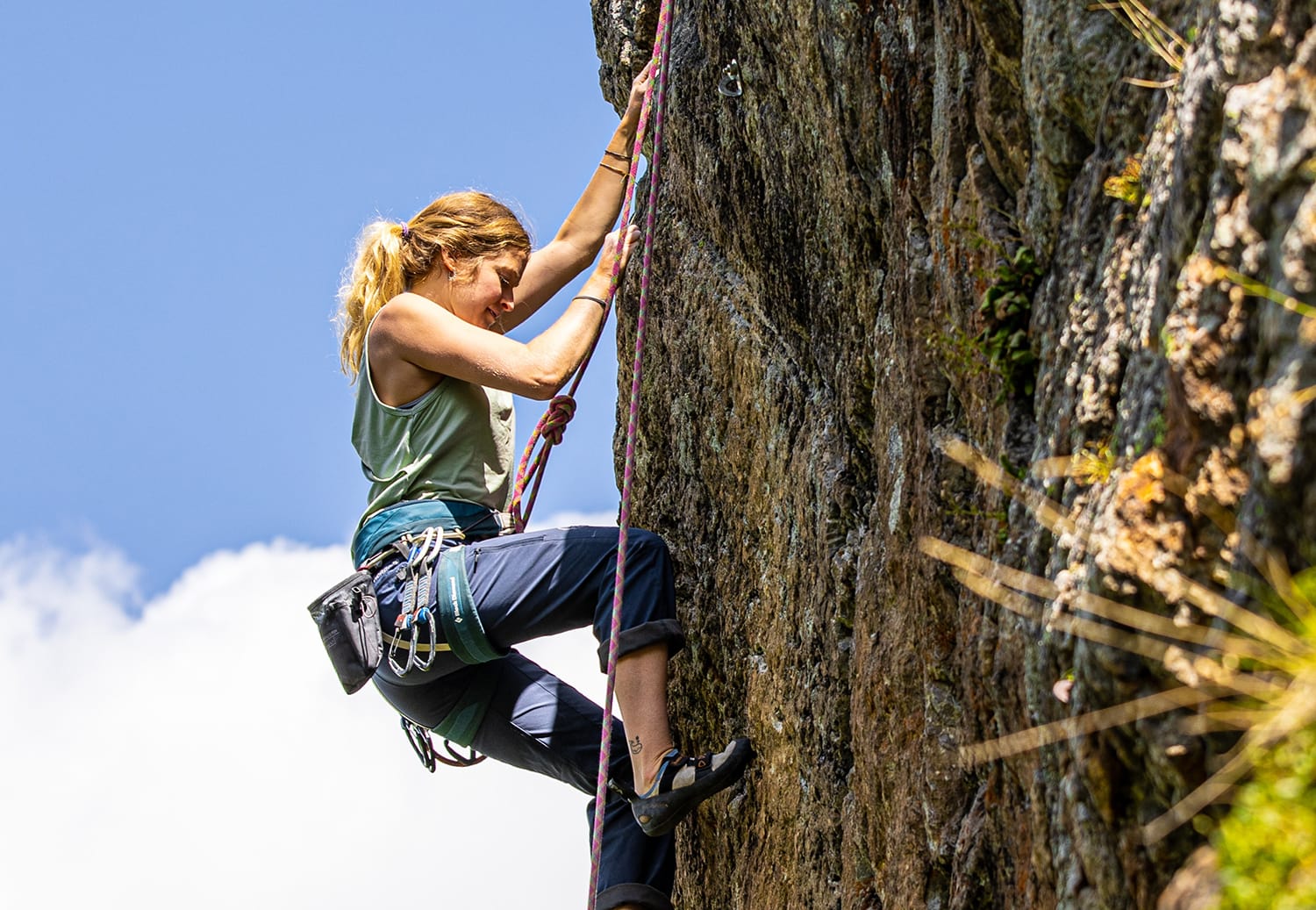
Published on: 06/07/2023
If you were to ask me why I love climbing so much, I’d say because it’s fun. Whether I am sport climbing, bouldering in a climbing gym, or lead climbing outside–I am having fun. Sure, there are days when climbing sucks, and it hurts or is frustrating, but for the most part, I love it because it’s fun.
But the beauty of climbing doesn’t stop there. A single climbing session offers way more than just fun – it also provides various social, mental, and physical benefits. And there’s science to back it up.
Keep reading to learn about 13 health benefits you can enjoy by getting into climbing.
But first, a disclaimer. The aim of this article is to distill a lot of helpful information from multiple studies into one document. This is not a medical article and doesn’t replace the recommendations of a medical doctor.
The Health Benefits of Rock Climbing
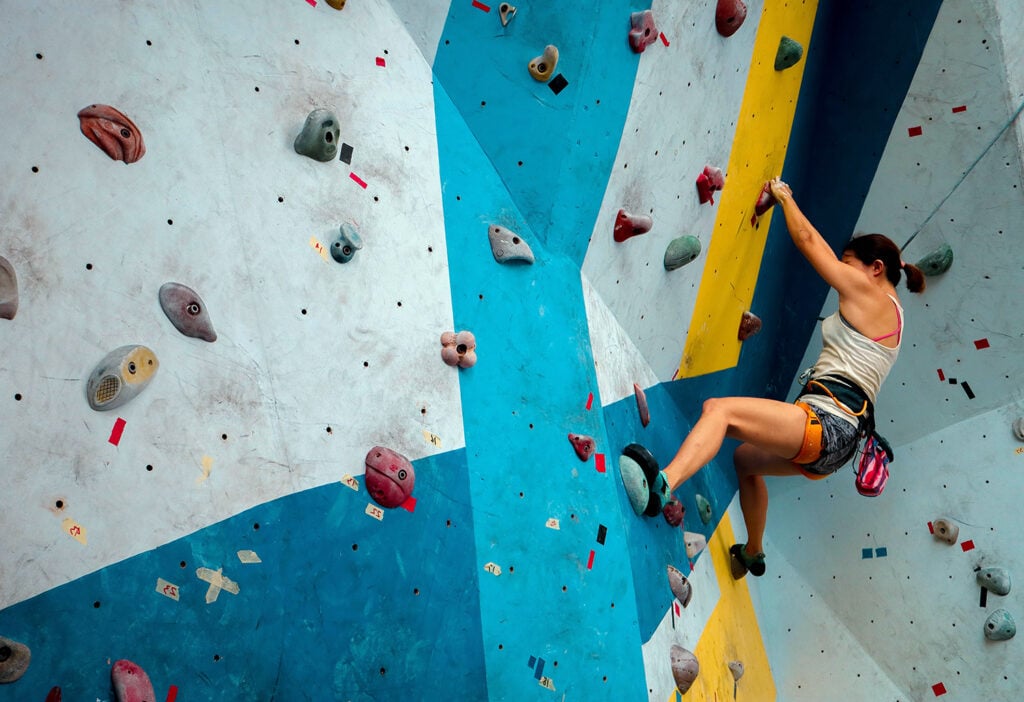
At first glance, it’s obvious that, like other sports, rock climbing gives you a good workout. However, rock climbing benefits more than just your physical body. In particular, there are three categories of benefits that you can enjoy if you climb regularly.
- Physical Health Benefits: such as increased strength, burning calories, and weight loss.
- Mental Health Benefits: such as combatting anxiety, depression, and other mental health issues.
- Social Well-Being Benefits: social benefits such as building community, improving communication skills, and making new friends.
Below you will find a list of the many benefits of climbing you can enjoy, no matter if you’re a beginner getting into indoor rock climbing or an experienced rock climber with many years of experience under your belt.
1. Rock Climbing Improves Cardiorespiratory Fitness
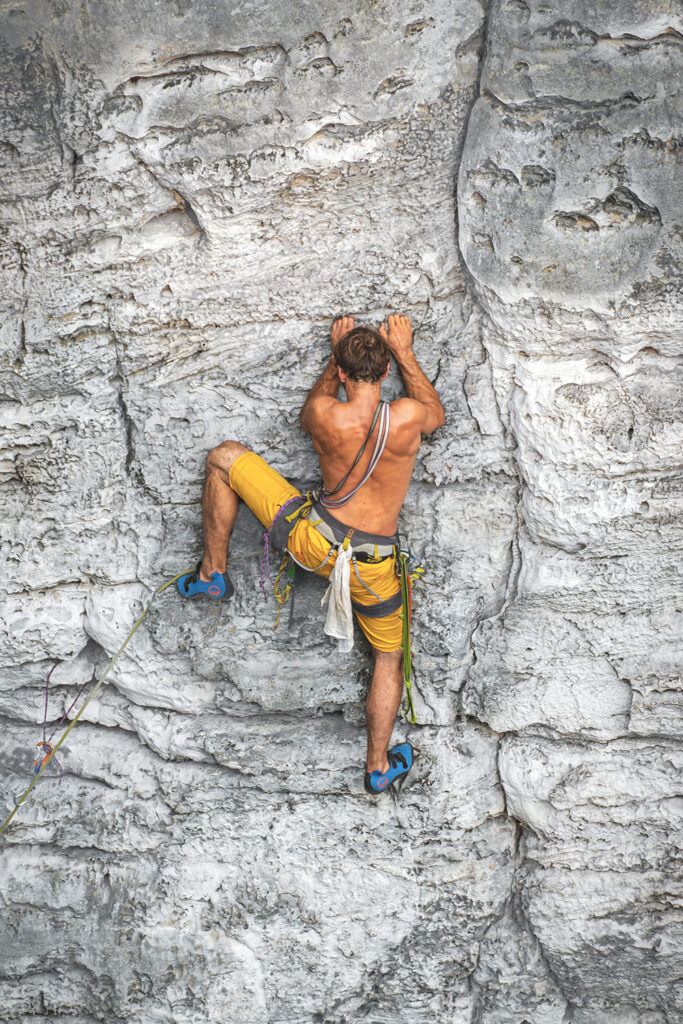
Rock climbing can offer you a cardio workout. A study from the British Journal of Sports Medicine (1) discovered that rock climbing increases the heart rate and produces a similar amount of energy expenditure as running at a moderate pace or cycling.
So, in other words, when you go indoor rock climbing or outside to the local crag, you don’t only work out your entire body, but you also get a healthy cardio workout. The benefits of such workout are numerous, like burning calories to lose and maintain weight and improving overall cardiovascular health and strengthening your heart.
2. Climbing Enhances Your Muscular Endurance
The same study from the British Journal of Sports Medicine (2) also concluded that rock climbing increases muscular endurance.
The researchers specifically cited rock climbing as a good activity for increasing muscular endurance, especially in previously sedentary populations.
Muscular endurance is an essential aspect of physical well-being as it refers to how much time or how many repetitions your muscle can sustain exercise. As a result, muscular endurance helps you keep a good posture for extended periods.
3. It Boosts Your Brain Power
Believe it or not, rock climbing is also a cerebral sport. It has many mental benefits on top of building strength in your muscles.
A study from the University of Florida (3) found that climbing for two hours boosted working memory capacity by 50%.
In addition, spending time climbing helps climbers enhance their cognitive abilities along with their muscles. That’s because climbing includes so much problem-solving, acting, coordinating, and planning. In that way, it’s unlike any other sport.
4. Rock Climbing Builds Full Body Strength
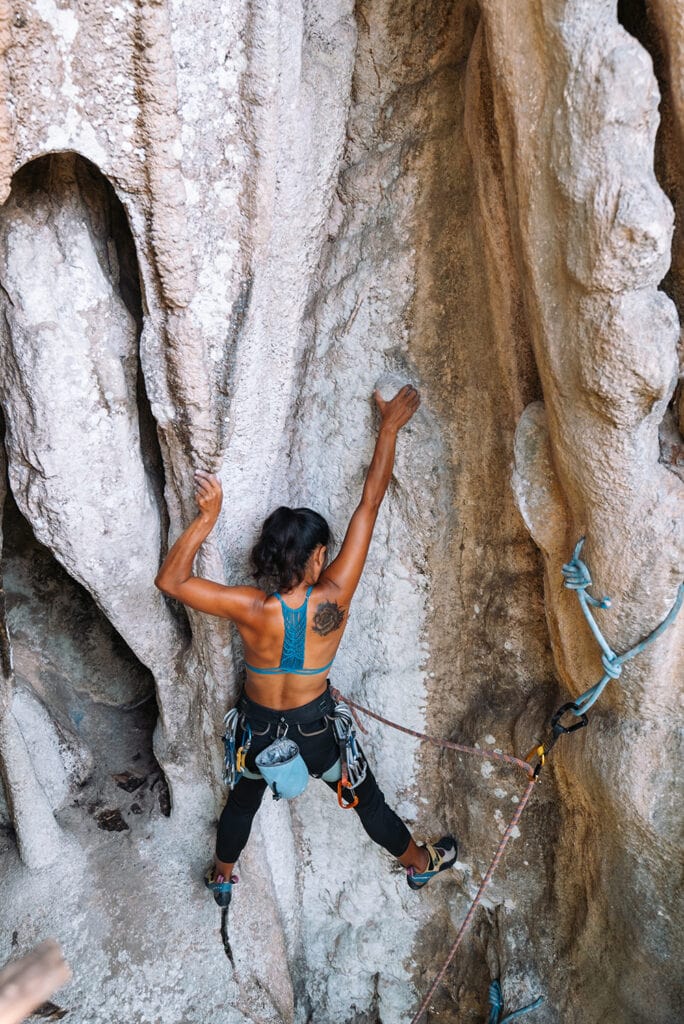
It’s a common misconception that you only use your upper body when climbing. In reality, climbing requires you to use your entire body (4).
It’s true that climbing helps you develop a strong upper body. However, climbing also positively affects your lower body also. That’s because you do a lot of high stepping, one-legged squats, and lunges to propel yourself up the rock face.
In addition, on steep, overhung terrain, you use a lot of core strength and back muscles to maintain body tension — it truly is a full-body workout.
5. Climbing Can Help to Treat Depression
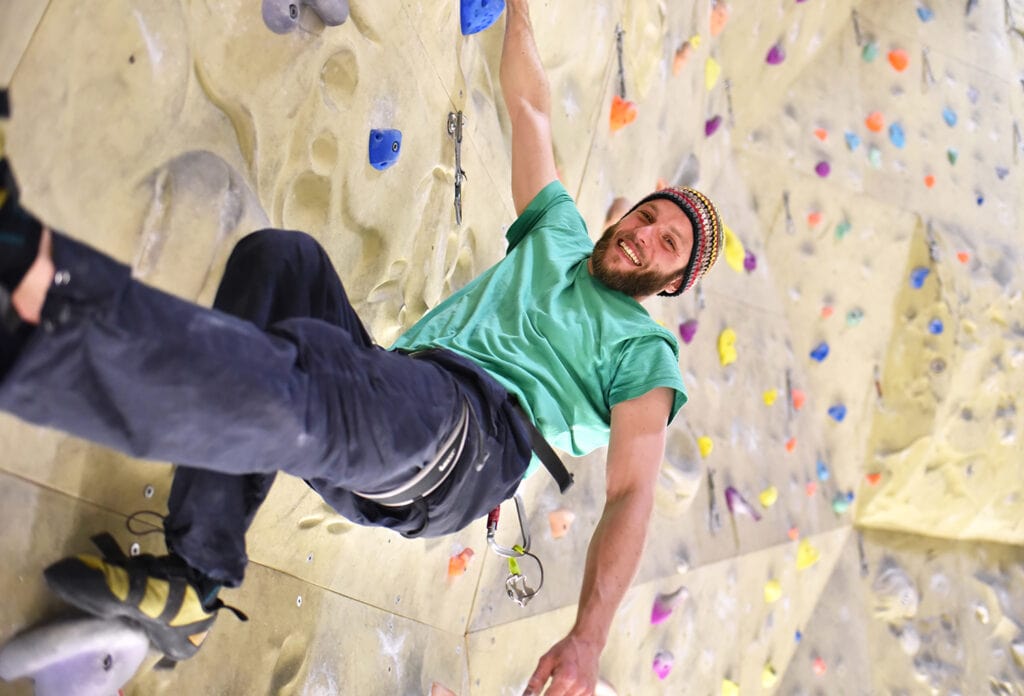
Rock climbing doesn’t only come with physical benefits. Like other sports, rock climbing can positively affect your mental health also.
The National Institute of Mental Health reports that anxiety disorders, including depression, are the most common mental illnesses in the U.S. About 18 percent of the nation’s adult population, or about 40 million people, cope with anxiety disorders (5).
Fortunately, a collaborative team of researchers from the University of Arizona and the University of Erlangen-Nuremberg in Germany discovered that bouldering may be effective at treating symptoms of depression. In 2015, they designed a randomized controlled trial (6) that utilized indoor bouldering as a therapeutic tool along with traditional psychotherapy. After eight weeks of intervention, they found positive effects on the measures of depression among the participants in the study.
6. It Can Help You Become a Better Communicator
In most cases, it’s impossible not to communicate with someone else while you go rock climbing. That’s because indoor climbing and outdoor rock climbing require teamwork between two people.
A massively important part of a climbing partnership is solid communication skills. For example, you need to be able to communicate about safety checks, exchange beta about how to climb a certain sequence and support one another when the climbing gets hard.
7. Rock Climbing Helps Build Self-Esteem
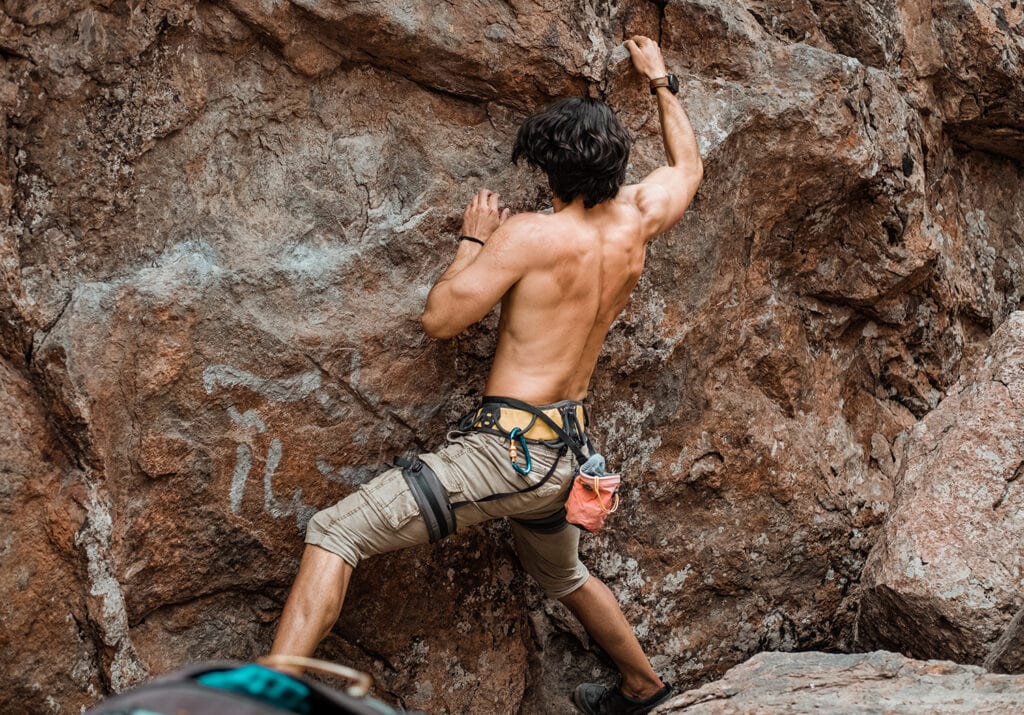
When you first start climbing, feeling a little self-conscious is normal. That’s true for trying any new hobby – typically, we dislike feeling unskilled at something.
But over time, you will notice that rock climbing can build your self-esteem. That’s because you may notice improvements in your physical ability to climb and how your body feels and looks, like having a stronger lower body and core muscles.
8. Climbing Improves Your Balance and Flexibility
Climbing is not all about sheer strength. On the contrary, a lot of climbing is delicate and requires balance and flexibility. This is particularly true for climbing on less-than-vertical slabs and vertical rock faces.
Over time, the experienced climber learns that good climbing is the perfect balance of balance, flexibility, strength, and finesse.
9. Climbing Helps You Build Community and Trust in Others
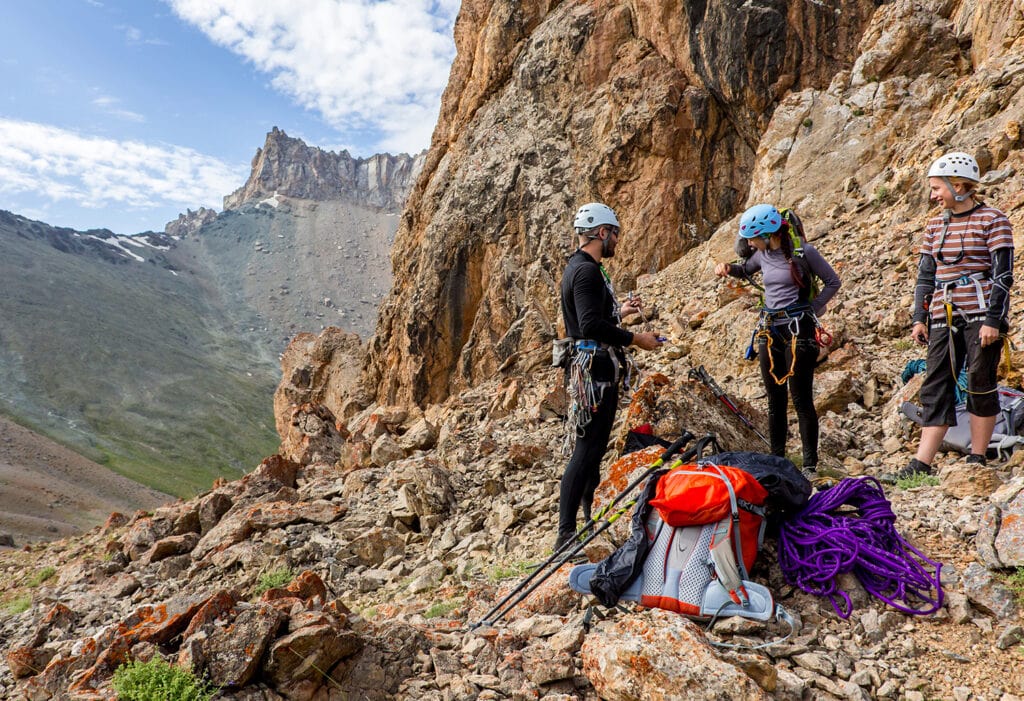
One of my favorite parts about rock climbing is the community. Since I started, I’ve benefited immensely from becoming part of the larger climbing community. For example, I’ve made new friends, met my fiance, and begun a successful career in guiding.
But it’s not just me who has felt the benefits of becoming a climber and joining the climbing community.
Research from the U.S. Department of Veterans Affairs (7) found that rock climbing helped participants create new friendships and enjoy a sense of camaraderie previously lacking in their lives.
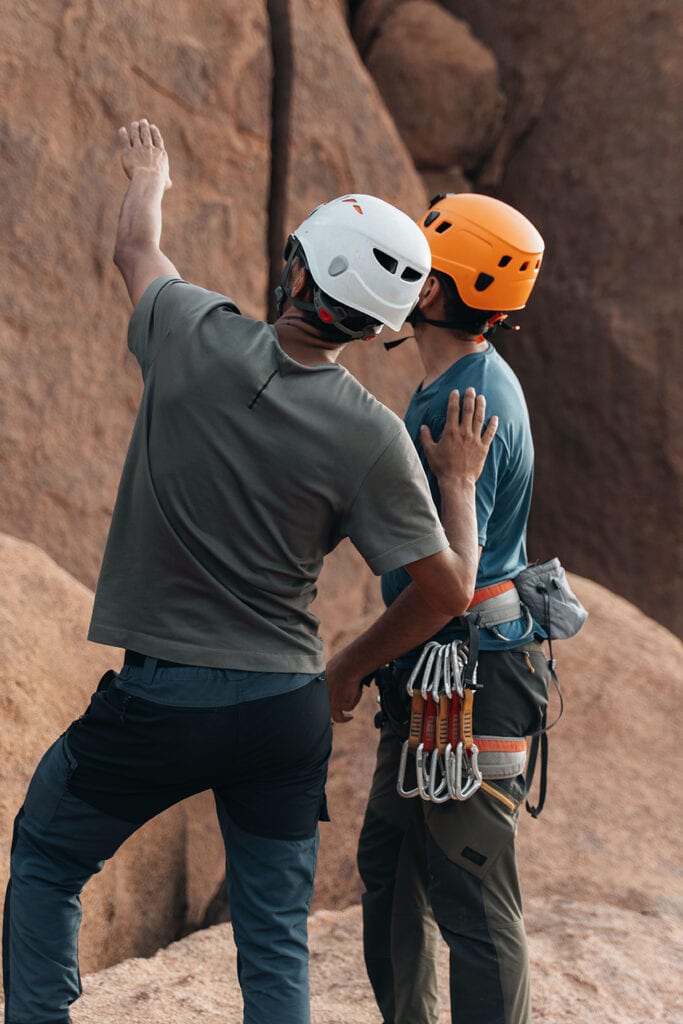
Also, rock climbing is a social sport that requires trust.
In many cases, you trust other people to help keep you safe. For example, if you are climbing on a rope, your belayer is in charge of catching you when you fall, and if you’re bouldering, your spotter helps you land safely. Therefore, rock climbing helps you build trust in others.
The trust you bestow in other people helps build friendships that most climbers cherish for a lifetime.
10. Rock Climbing Makes You a Better Problem Solver
There’s a reason why climbers refer to boulders as “boulder problems.” That’s because they are puzzles you have to solve to reach the top.
Solving a boulder problem requires more than just physical strength. It also requires you to think critically, patiently learn from trial and error, and make assessments.
By problem solving, sometimes one move at a time, you are reinforcing your critical thinking skills and your ability to persevere despite being faced with obstacles.
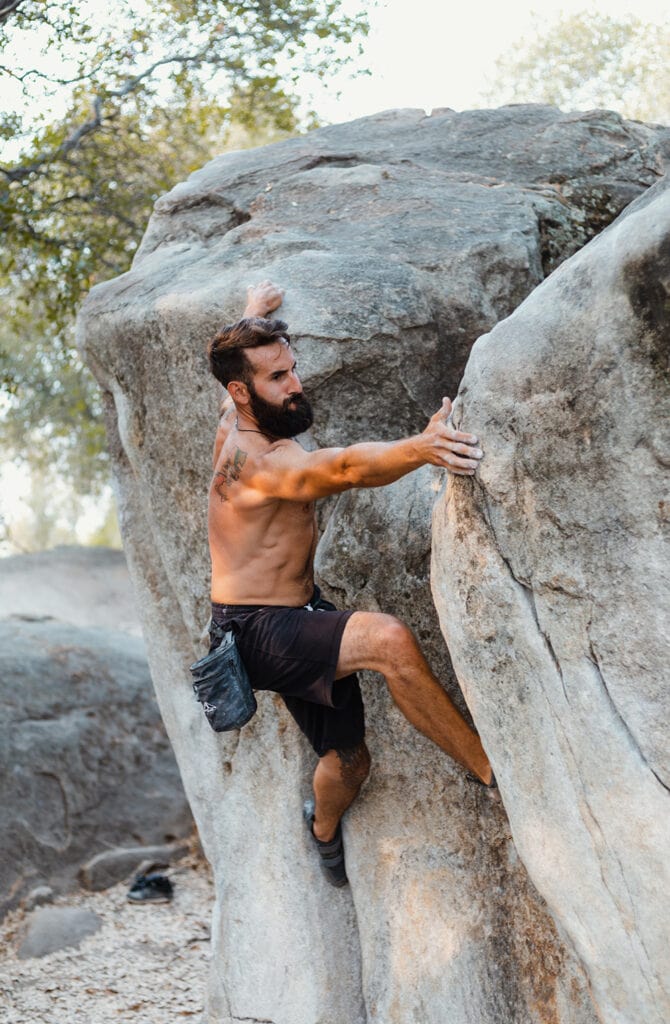
11. Climbing Helps You Become More Mindful
Rock climbing is not only a physical activity. It’s also very mental. So much so that many climbers commonly describe the sport as 80% mental and 20% physical.
Whatever the ratio is, the fact remains the same – you need to focus your mind to be successful in climbing.
Climbing makes you more mindful because it completely drowns out distractions. When climbing, you are utterly present at the moment and thinking of nothing but the movement you need to perform.
12. It Can Reduce Stress
Physical exercise, like rock climbing, can help reduce stress in your everyday life. Research shows that after physical exercise, people experience lower levels of stress hormones like epinephrine and cortisol (8).
13. Learning to Rock Climb Can Help You Overcome Fear

It’s perfectly natural to have a fear of heights and falling. Your fear of heights comes from an innate desire to keep yourself safe and avoid danger. And your fear of falling comes from your fear of losing control.
Luckily, rock climbing can help you overcome these fears. In his book Espresso Lessons, Arno Ilgner talks about how practicing falling can give you the experiential knowledge your mind requires to accurately assess the consequences of falling.
With accurate experiential knowledge, you can fully face the consequences of falling without falling victim to nagging fears based on unrealistic intellectual knowledge and worst-case scenarios that your mind invents.
What Are the Risks of Rock Climbing?
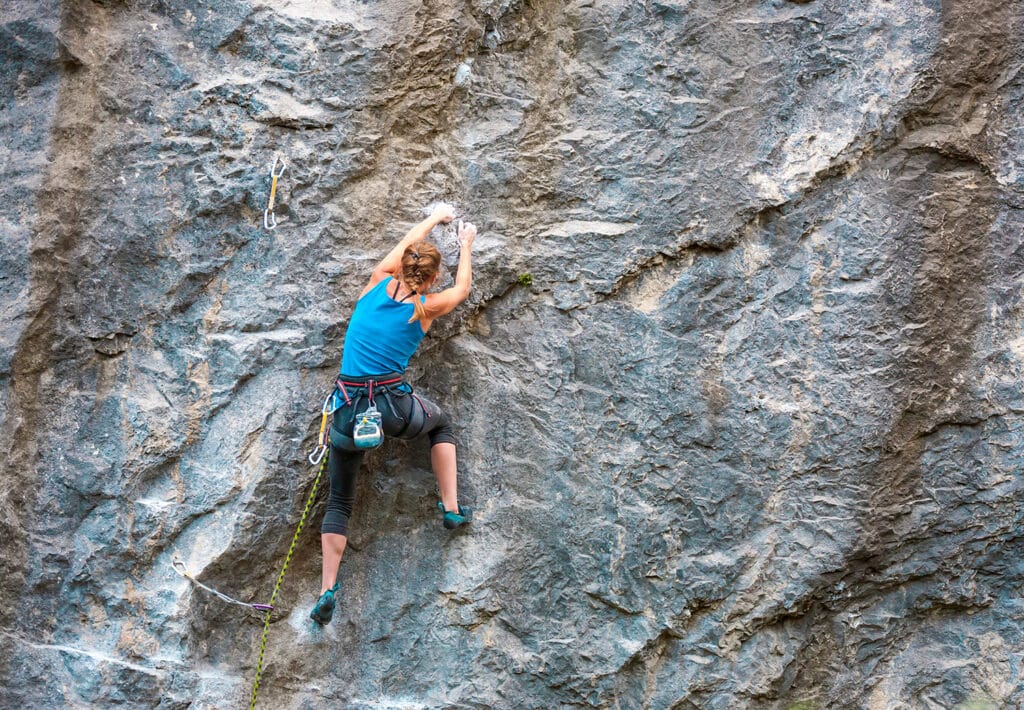
Unfortunately, the health benefits of rock climbing don’t come on their own. There are plenty of other risks associated with rock climbing.
That’s because rock climbing is inherently dangerous. Whether indoor climbing or sending routes in Joshua Tree National Park – climbing comes with many risks.
Shoulder, neck, and upper back injuries are common in climbers. As well as finger and elbow injuries.
Injury rates in the lower extremities are low; however, they do occur, especially from a traumatic event like falling (9). For example, ankles are susceptible to sprains and fractures, and toes and feet are at risk of overuse injuries.
Rock climbing can also be fatal. By the numbers, rappelling is one of the more dangerous activities climbers perform (10). Not wearing a helmet is also correlated to severe injuries and fatalities.
Final Thoughts – Climb Safely to Enjoy the Benefits of Climbing For Years to Come
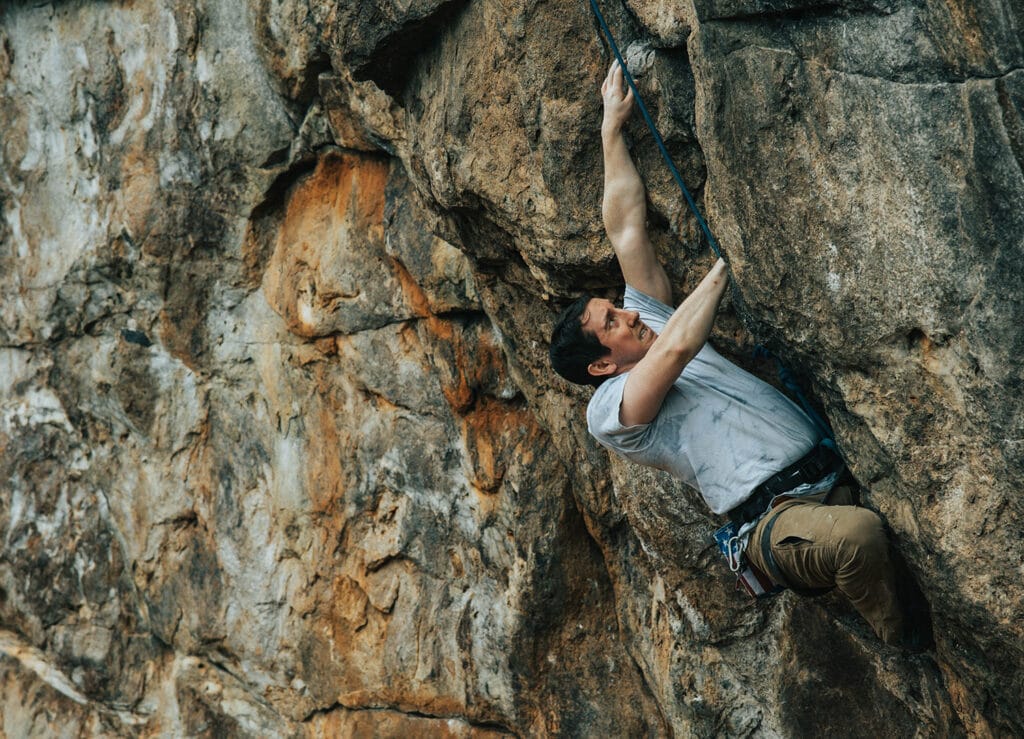
Incorporating rock climbing into your life is a great way to take advantage of the many social, mental and physical benefits that come with the sport.
However, starting to rock climb also exposes you to certain risks. But that can be said for anything in life, like driving your car to work, playing in the local softball league, or getting into base jumping.
So, with rock climbing, like with any risky activity – do your research and get educated, make conservative decisions to mitigate risk, and remember that it’s supposed to be fun!
References
Energy expenditure and physiological responses during indoor rock climbing.
C. M. Mermier et al. (1997)
Br J Sports Med.
https://www.ncbi.nlm.nih.gov/pmc/articles/PMC1332525/
Energy expenditure and physiological responses during indoor rock climbing.
C. M. Mermier et al. (1997)
Br J Sports Med.
https://www.ncbi.nlm.nih.gov/pmc/articles/PMC1332525/
The Working Memory Benefits of Proprioceptively Demanding Training: A Pilot Study
Ross G Alloway et al. (2015)
Percept Mot Skills
https://pubmed.ncbi.nlm.nih.gov/26029969/
Climbing
NHS Health Scotland (retrieved on 06/07/2023)
https://www.nhsinform.scot/healthy-living/keeping-active/activities/climbing
Rock climbing envisioned as new treatment for depression
University of Arizona (2017)
Science Daily
https://www.sciencedaily.com/releases/2017/05/170525161321.htm
Indoor rock climbing (bouldering) as a new treatment for depression: study design of a waitlist-controlled randomized group pilot study and the first results
Katharina Luttenberger et al. (2015)
BMC Psychiatry
https://bmcpsychiatry.biomedcentral.com/articles/10.1186/s12888-015-0585-8
Adaptive rock climbing has physical, psychological benefits for people with disabilities
U.S. Department of Veterans Affairs, May 2020 (retrieved on 06/07/2023)
https://www.research.va.gov/currents/0520-Adaptive-rock-climbing-has-physical-and-psychological-benefits-for-people-with-disabilities.cfm
Working out boosts brain health
American Psychological Association, Mar 2020 (retrieved on 06/07/2023)
https://www.apa.org/topics/exercise-fitness/stress
Rock Climbing Injuries
Physiopedia (retrieved on 06/07/2023)
https://www.physio-pedia.com/Rock_Climbing_Injuries#cite_note-2
30 Years of Climbing Accident Data: An Investigative Report
Eliot Caroom, Sep 2020(retrieved on 06/07/2023)
Rock & Ice
https://www.rockandice.com/climbing-accidents/30-years-of-climbing-accident-data-an-investigative-report/#_reg-wall
